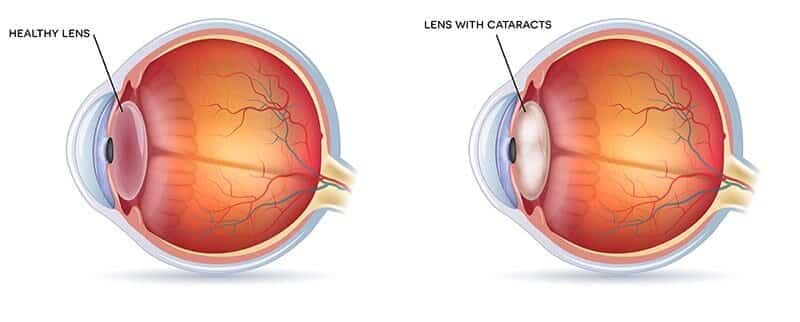Are you experiencing cloudy or blurred vision that’s interfering with your daily activities?
Cataracts could be the culprit. Cataracts are a common age-related vision problem that affects millions of people worldwide. However, the good news is that modern advancements in eye care have made cataract treatment highly effective. Take the first step towards reclaiming your vision and rediscovering life by learning about cataracts and the available treatment options
Cataracts develop when the natural lens of the eye becomes cloudy, leading to a gradual deterioration of vision. They typically develop with age but can also be caused by factors like genetics, injury, or prolonged exposure to UV rays. Over time, cataracts can severely impact your ability to see clearly, making daily tasks such as reading, driving, and enjoying hobbies increasingly challenging.

If you’re experiencing any of the following symptoms, it’s essential to seek the advice of an eye care professional:
Restoring Clarity with Cataract Treatment: The good news is that cataracts can be effectively treated through a safe and straightforward surgical procedure. Cataract surgery involves removing the clouded lens and replacing it with an artificial intraocular lens (IOL). The procedure is typically quick and virtually painless, with most patients experiencing improved vision within a few days.
At Southwest Eye Care, our team of skilled eye care professionals is dedicated to helping you regain your vision and quality of life. When you schedule an appointment with us to discuss cataracts, you can expect:
Traditional monofocal IOLs correct vision at a single focal point, usually for distance vision. However, advanced IOLs go beyond this limitation.
Multifocal IOLs, for instance, have multiple zones that enable patients to see clearly at varying distances, reducing or eliminating the need for reading glasses.
Accommodating IOLs work by shifting focus between different distances, mimicking the natural accommodation of the eye.
Toric IOLs are designed to correct astigmatism, a common condition that can cause distorted or blurry vision. These lenses are customized to correct the specific curvature irregularities of the cornea, resulting in significantly improved clarity.

Additionally, there are Extended Depth of Focus (EDOF) IOLs that enhance vision across a range of distances while maintaining good contrast sensitivity. These lenses provide a continuous range of focus, reducing visual disturbances like halos and glare that can be associated with multifocal IOLs.
The selection of the most suitable advanced IOL depends on factors such as the patient’s lifestyle, visual preferences, and any pre-existing eye conditions. Consulting with one of Southwest Eye Care’s experienced ophthalmologists is crucial to determine the best option for individual needs.
Don’t let cataracts hold you back from living life to the fullest. Take the first step towards regaining clarity and independence by scheduling an appointment with our team of skilled eye care professionals. We’re here to help you explore your cataract treatment options and provide the care and support you need throughout your journey.
Cataracts don’t have to be a barrier to a vibrant and active life. With the advances in cataract treatment and our team of experienced eye care professionals at Southwest Eye Care, you can look forward to rediscovering life with improved vision.
If you or a loved one are experiencing symptoms of cataracts, don’t wait any longer. Contact us today to schedule an appointment and discuss your options. Together, we can pave the way to a clearer, brighter future!
If you or a loved one are experiencing symptoms of cataracts, don’t wait any longer. Contact us today to schedule an appointment and discuss your options. Together, we can pave the way to a clearer, brighter future!
Take Our Cataract Self-Test
Select a location to see details.